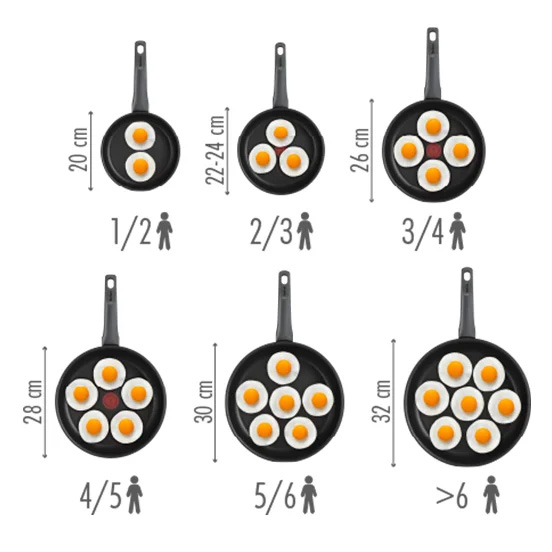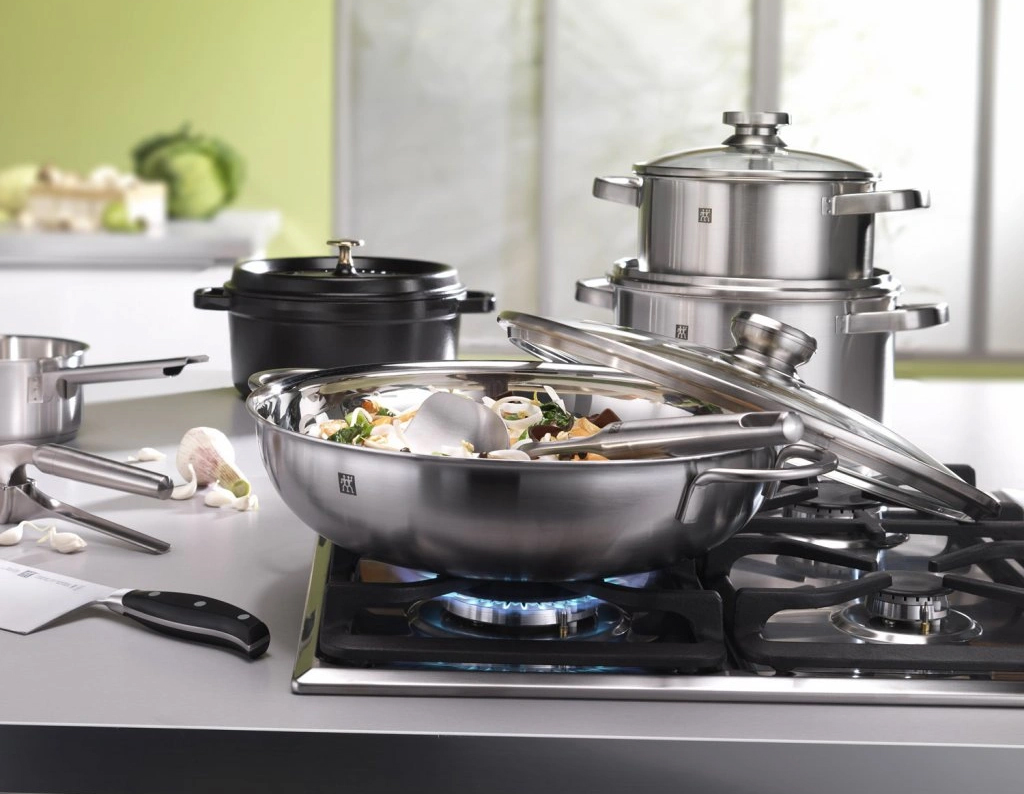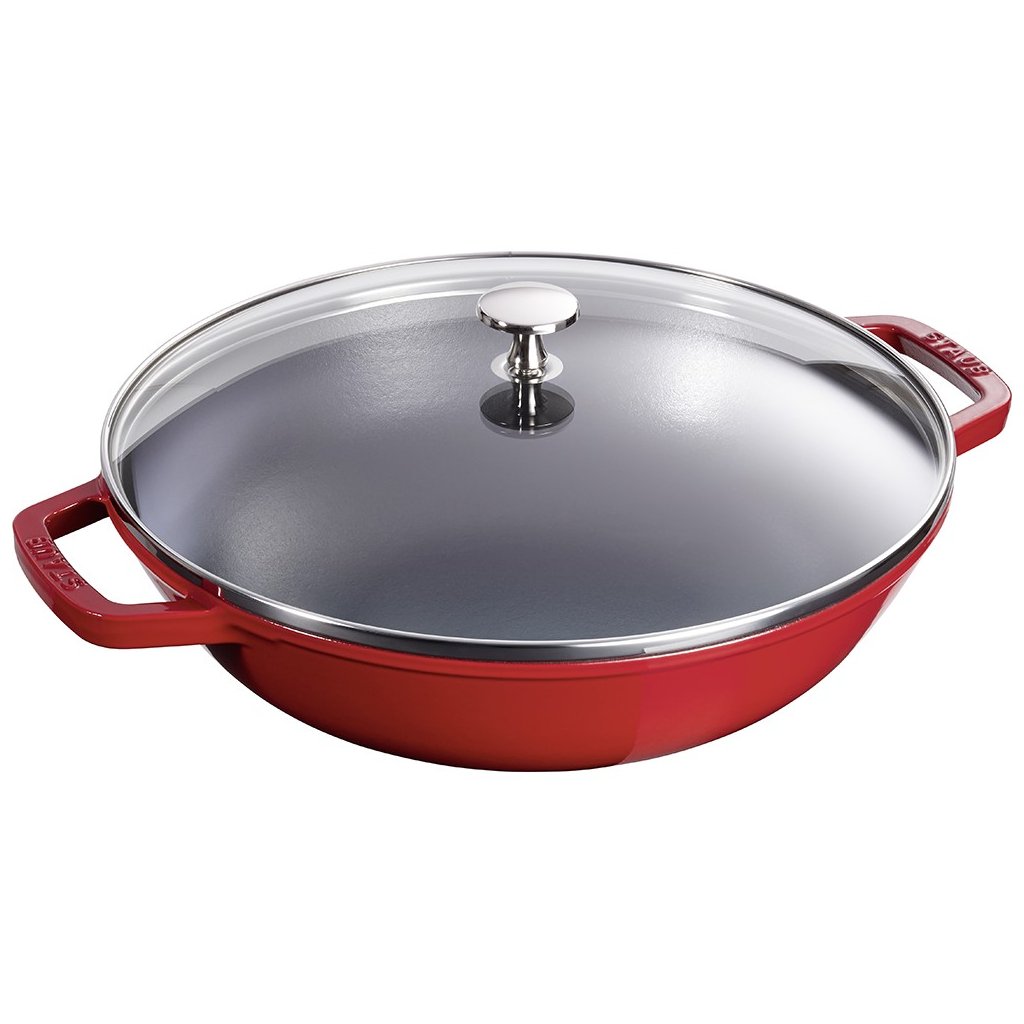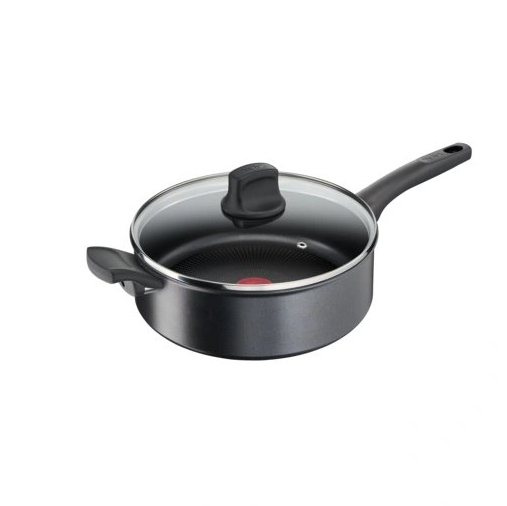Did you know that pans with lids save energy by speeding up cooking by up to 30%? This is due to the heat accumulation under the lid. But it is also true that cooking with a lid is not suitable for all dishes. We therefore have some important information about both the pans with lids and cooking in them.
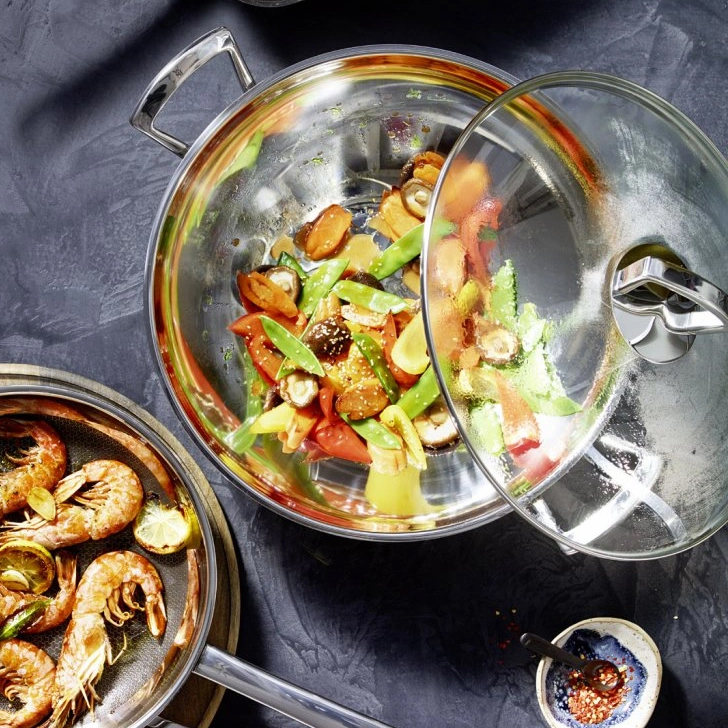
- Glass lids allow you to monitor the entire cooking process without having to lift them. In addition, they are durable, suitable for use in the oven and dishwasher safe.
- Glass is inherently fragile and therefore prone to breakage. Glass lids tend to be heavier.
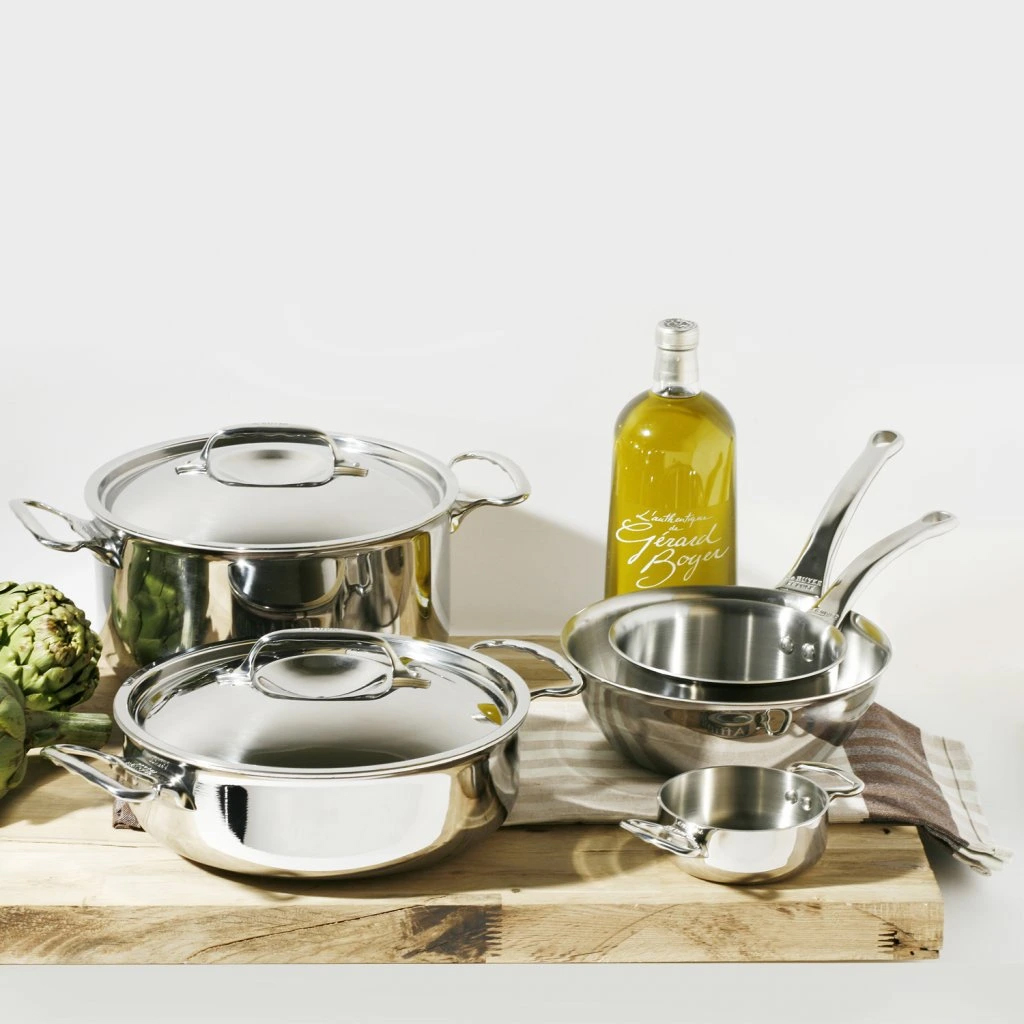
- Stainless steel lids are highly resistant to scratches, corrosion and high temperatures. They are dishwasher safe, oven safe and usually lighter than glass ones.
- They are opaque, so if you want to check your food, you have to lift the lid, which can interfere with the cooking process.
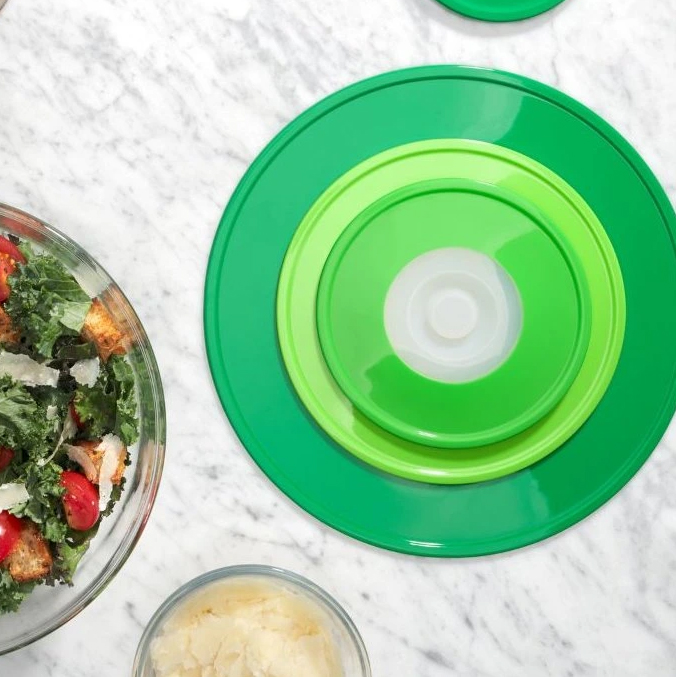
- The silicone lids are lightweight and flexible, making them easy to store. They are also resistant to high temperatures and are suitable for use in the oven, even microwave ovens.
- Like stainless steel, silicone is opaque. When washed in the dishwasher, silicone lids can absorb odours from washing.
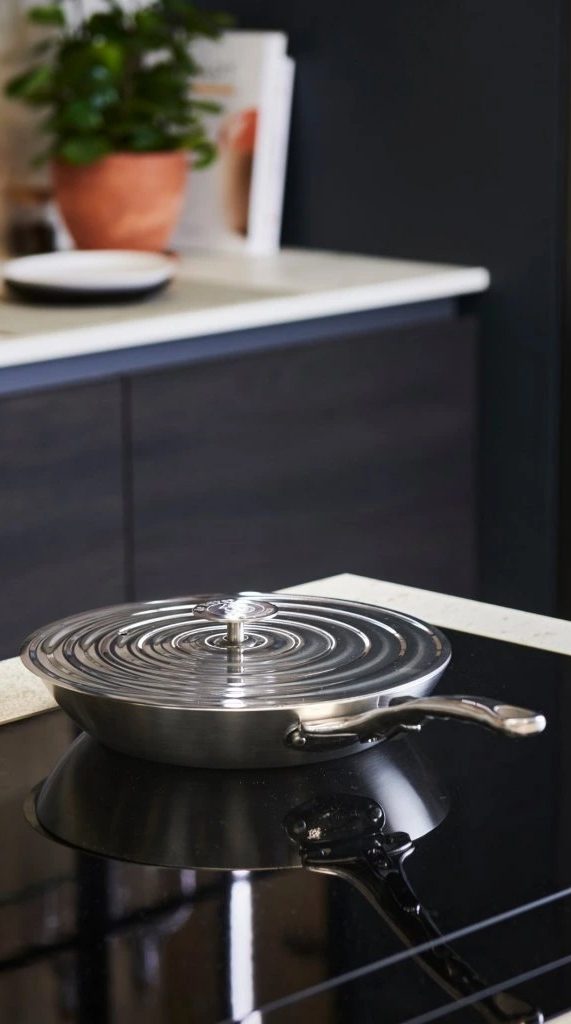
Pans with lids: types and uses
Cast iron pans with lids
They are great for long term use and even heat distribution. They are also suitable for baking in the oven. But they are heavy and require special care.
Stainless steel pans with lids
They are scratch resistant and suitable for a wide range of cooking applications. However, they may require more fat to keep food from browning.
Non-stick pans with lids
They can therefore be cooked almost without fat and are easy to clean. However, they are susceptible to scratching and their surface can be damaged at high temperatures.
Steel pans with lids
They are durable, versatile and their surface is naturally non-stick when handled correctly. They tend to be heavy, can easily overheat and require special care.
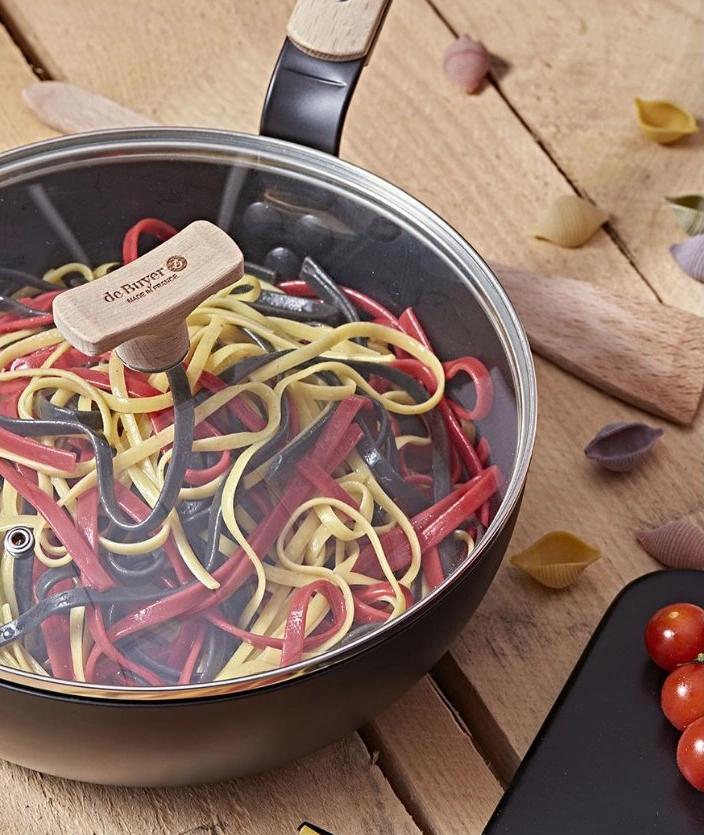
The lid helps retain heat and moisture inside the pan, making it ideal for braising meats, vegetables or preparing sauces. It also allows for slow cooking, where flavours can combine better.
Pans with lids are unbeatable for successful steaming. Simply add a little water to the bottom of the pan, place the steaming basket of ingredients, cover with the lid and then just wait for your dish to cook. A wok with a lid is also suitable for this purpose.
The lid is an excellent helper in the preparation of rice and rice dishes such as risottos, pilafs, etc. This is because it keeps both the temperature and the humidity constant, which is absolutely crucial for achieving the right consistency.
You will also appreciate the deep pans with lids when preparing dishes that start cooking on the stove and finish cooking in the oven. Cast iron pans with lids are ideal for this purpose, but other materials are also suitable.
Let's also not forget the very basic function of the lid, namely that if you cover the food after cooking it, it will cool much more slowly.
Quality pan lids

